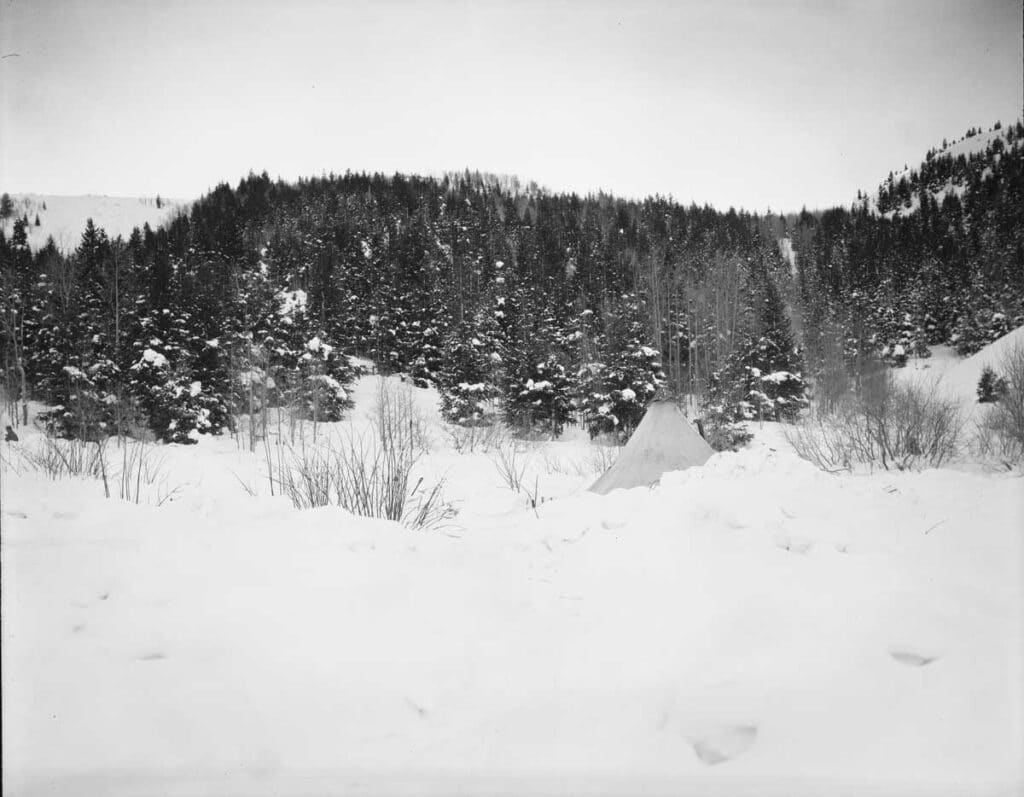The following is the third article in a series on the idea to build a ski resort in Park City.
Paul Stokes, the Union Pacific Railroad’s local station agent for Park City, received an interesting telegram from William Hynes (Union Pacific Manager of freight and passenger operations, Western Division) in late 1935. The communique informed Stokes that a person employed by Averell Harriman (CEO of the Union Pacific) would visit Park City in the first week of January 1936. That person was Count Felix von Schaffgotsch. And they requested a tour of the soon to be developed Snow Park winter sports area. No explanation was provided.
Stokes was familiar with the WPA’s pending investment in Park City for a ski area. The Park Record provided extensive coverage in the closing months of 1935. He thought to himself that a tour of the Deer Valley/ Frog Valley area would be brief. Less than three miles (southeast) from town, there wasn’t much save for a rail spur, the Park City Consolidated Mine (operating at full capacity, a rarity for the times), and the ruins of the Queen Esther Mine and Judge Mine Smelter.
Considering that Averell Harriman requested this tour, Stokes had no intention of disappointing him. He would ensure von Schaffgotsch received VIP treatment. He knew the perfect person for this assignment.
Paul walked across Pacific Avenue to the Kimball Garage, directly opposite (west) from the station. The multigenerational family business was currently managed by the Kimball brothers, Gib and Bob. It was a full-service operation open twenty-four hours every day, providing automotive repairs, fueling, car storage, and chaining services. Mel Fletcher was one of their employees.
A junior at Park City High School, Mel was locally renowned for his athletic abilities, endearing personality, and a belief that winter sports could be an important economic driver for Park City’s future. Also, his winter driving skills were exceptional. Mel owned a 1924 Buick painted red, white, and blue that had all four tires chained up during snow season. Paul asked the Kimball brothers if arrangements could be made for Mel to escort von Schaffgotsch. Their answer: of course. The day of the tour soon arrived.

Credit: Park City Historical Society & Museum, Pop Jenks Collection
Before departing Ogden’s Union Station at 6:30 a.m., Tom O’Keefe, the conductor for train #226 (the Park City local), wired Stokes that they would arrive at 11 a.m. Stokes welcomed von Schaffgotsch to town. They then walked over to the Kimball Garage where greetings and introductions were exchanged.
Mel Fletcher drove the Count to Deer Valley, extolling the virtues of Park City for winter sports. Both men shared a passion – an unequivocal faith in the potential of winter sports in America. Both would play key roles in making their respective visions of the future a reality.
After the tour completed, Mel dropped von Schaffgotsch at the station in time to catch the return train to Ogden, #225. Ultimately, Park City was not the Count’s choice for a new resort, mostly due to the active mining scene nearby.
Although they would never meet again, von Schaffgotsch and Fletcher would see their visions of the future become reality. For von Schaffgotsch, the opening of the grand Sun Valley Resort in Ketchum, Idaho on December 21, 1936, fulfilled his (and Harriman’s) vision. For Mel Fletcher, while Snow Park became a local ski spot soon after the Count’s visit, the later opening of Treasure Mountains Resort on December 21, 1963, was both a vision realized and a dream come true. Park City would never be the same.
The Park City Museum offers exclusive hikes to historic mining locations to our members. Join today to be able to join our remaining hikes in July, August, and September. Sign up through the front desk or online: https://parkcityhistory.org/membership/.